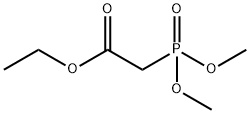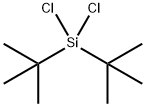Ethyldichlorosilane
- CAS NO.:1789-58-8
- Empirical Formula: C2H6Cl2Si
- Molecular Weight: 129.06
- MDL number: MFCD00053205
- EINECS: 217-255-0
- SAFETY DATA SHEET (SDS)
- Update Date: 2024-12-18 14:08:57

What is Ethyldichlorosilane?
Description
Ethyl dichlorosilane is a colorless liquid witha sharp, irritating odor. Molecular weight = 129.07;Boiling point = 75.5℃; Flash point =-1℃. Explosivelimits: LEL: 2.9%; UEL: unknown. Hazard Identification (based on NFPA-704 M Rating System): Health 3,Flammability 4, Reactivity 2 . Dangerously reactive withwater.
Chemical properties
Colorless liquid.Readily hydrolyzed by moisture, with the liberation of hydrogen and hydrogen chloride.
Chemical properties
Ethyl dichlorosilane is a colorless liquid. Sharp, irritating odor
The Uses of Ethyldichlorosilane
Intermediate for silicones.
What are the applications of Application
Will form high-boiling polymeric by-products with aqueous work-up.
General Description
A colorless fuming liquid with a pungent odor. Flash point 30°F. Vapor and liquid may cause burns. Denser than water. Vapors heavier than air.
Air & Water Reactions
Highly flammable. Based on the properties of similar materials, there is the possibility that the reaction of Ethyldichlorosilane with water may be vigorous or violent. Products of the reaction include hydrogen chloride. The reaction generates heat and this heat may be sufficient to ignite the product. The chlorosilicon hydrides(ClxSiHy) are spontaneously flammable in air [NFPA 1991].
Reactivity Profile
Chlorosilanes, such as Ethyldichlorosilane, are compounds in which silicon is bonded to from one to four chlorine atoms with other bonds to hydrogen and/or alkyl groups. Chlorosilanes react with water, moist air, or steam to produce heat and toxic, corrosive fumes of hydrogen chloride. They may also produce flammable gaseous H2. They can serve as chlorination agents. Chlorosilanes react vigorously with both organic and inorganic acids and with bases to generate toxic or flammable gases.
Hazard
Flammable, dangerous fire risk. Strong irritant to eyes and skin.
Health Hazard
Inhalation irritates mucous membranes. Contact with liquid causes severe burns of eyes and skin. Ingestion causes severe burns of mouth and stomach.
Chemical Reactivity
Reactivity with Water Reacts vigorously, evolving hydrogen chloride (hydrochloric acid); Reactivity with Common Materials: Reaction with surface moisture will generate hydrogen chloride, which corrodes common metals; Stability During Transport: Stable; Neutralizing Agents for Acids and Caustics: Flood with water, rinse with sodium bicarbonate or lime solution; Polymerization: Not pertinent; Inhibitor of Polymerization: Not pertinent.
Safety Profile
Poison by ingestion and inhalation. A severe irritant to skin, eyes, and mucous membranes. Corrosive. Dangerous fire hazard if exposed to heat, open flames, or powerful oxidizers. Will react with water or steam to produce heat and toxic and corrosive fumes. To fight fire, use foam, dry chemical, mist, spray. When heated to decomposition it emits toxic fumes of Cland phosgene. See also CHLOROSILANES.
Potential Exposure
This material is used in silicone polymer manufacture.
First aid
If this chemical gets into the eyes, remove anycontact lenses at once and irrigate immediately for at least30 min, occasionally lifting upper and lower lids. Seek medical attention immediately. If this chemical contacts theskin, remove contaminated clothing and wash immediatelywith soap and water. Seek medical attention immediately. Ifthis chemical has been inhaled, remove from exposure,begin rescue breathing (using universal precautions, including resuscitation mask) if breathing has stopped and CPR ifheart action has stopped. Transfer promptly to a medicalfacility. When this chemical has been swallowed, get medical attention. If victim is conscious, administer water ormilk. Do not induce vomiting. Medical observation isrecommended for 24- 48 h after breathing overexposure, aspulmonary edema may be delayed.
storage
(1) Color Code—Red: Flammability Hazard: Storein a flammable liquid storage area or approved cabinetaway from ignition sources and corrosive and reactivematerials. (2) Color Code—White: Corrosive or ContactHazard; Store separately in a corrosion-resistant location.Prior to working with this chemical you should be trainedon its proper handling and storage. Before entering confinedspace where this chemical may be present, check to makesure that an explosive concentration does not exist. Ethyldichlorosilane must be stored to avoid contact with moistureand oxidizers (such as perchlorates, peroxides, permanganates, chlorates, and nitrates) since violent reactions occur.Store in tightly closed containers in a cool, well-ventilatedarea away from water, steam, and moisture because toxic andcorrosive chloride gases, including hydrogen chloride can beproduced. Sources of ignition, such as smoking and openflames, are prohibited where ethyl dichlorosilane is handled,used, or stored. Metal containers involving the transfer of 5gallons or more of ethyl dichlorosilane should be groundedand bonded. Drums must be equipped with self-closingvalves, pressure vacuum bungs, and flame arresters. Useonly nonsparking tools and equipment, especially whenopening and closing containers of ethyl dichlorosilane.
Shipping
UN1183 Ethyldichlorosilane, Hazard Class: 4.3; Labels: 4.3-Dangerous when wet material; 8-Corrosive material
Incompatibilities
Incompatible with oxidizers (chlorates, nitrates, peroxides, permanganates, perchlorates, chlorine, bromine, fluorine, etc.); contact may cause fires or explosions. Keep away from alkaline materials, strong bases, strong acids, oxoacids, and epoxides. Chlorosilanes react vigorously with bases and both organic and inorganic acids generating toxic and/or flammable gases. Chlorosilanes react with water, moist air, or steam to produce heat and toxic, corrosive fumes of hydrogen chloride. They may also produce flammable gaseous hydrogen. Attacks metals in the presence of moisture
Properties of Ethyldichlorosilane
| Melting point: | -107°C |
| Boiling point: | 74-76°C |
| Density | 1.089 g/mL at 20 °C(lit.) |
| refractive index | n |
| Flash point: | -9°C |
| storage temp. | Refrigerator |
| Specific Gravity | 1.093 |
| Odor | Sharp, hydrochloric acid-like; acrid. |
| Hydrolytic Sensitivity | 8: reacts rapidly with moisture, water, protic solvents |
| CAS DataBase Reference | 1789-58-8(CAS DataBase Reference) |
| NIST Chemistry Reference | Ethyldichlorosilane(1789-58-8) |
| EPA Substance Registry System | Silane, dichloroethyl- (1789-58-8) |
Safety information for Ethyldichlorosilane
| Signal word | Danger |
| Pictogram(s) |
 Flame Flammables GHS02  Corrosion Corrosives GHS05  Exclamation Mark Irritant GHS07  Health Hazard GHS08 |
| GHS Hazard Statements |
H225:Flammable liquids H260:Substances And Mixtures Which, In Contact With Water,Emit Flammable Gases H314:Skin corrosion/irritation H334:Sensitisation, respiratory H335:Specific target organ toxicity, single exposure;Respiratory tract irritation |
| Precautionary Statement Codes |
P210:Keep away from heat/sparks/open flames/hot surfaces. — No smoking. P223:Keep away from any possible contact with water, because of violent reaction and possible flash fire. P261:Avoid breathing dust/fume/gas/mist/vapours/spray. P231+P232:Handle under inert gas. Protect from moisture. P370+P378:In case of fire: Use … for extinction. P422:Store contents under … |
Computed Descriptors for Ethyldichlorosilane
Related products of tetrahydrofuran








You may like
-
 106-43-4 Para Chloro Toluene (PCT) 99.00%View Details
106-43-4 Para Chloro Toluene (PCT) 99.00%View Details
106-43-4 -
 88150-42-9 Amlodipine Base 99.00%View Details
88150-42-9 Amlodipine Base 99.00%View Details
88150-42-9 -
 Pyrrolidine 99.00%View Details
Pyrrolidine 99.00%View Details
123-75-1 -
 88-82-4 2,3,5-Triiodobenzoic Acid 99.00%View Details
88-82-4 2,3,5-Triiodobenzoic Acid 99.00%View Details
88-82-4 -
 Methyl-2-Methoxy-5-Sulfamoyl Benzoate 99.00%View Details
Methyl-2-Methoxy-5-Sulfamoyl Benzoate 99.00%View Details
33045-52-2 -
 532-27-4 2-Chloro Acetophenone 99.00%View Details
532-27-4 2-Chloro Acetophenone 99.00%View Details
532-27-4 -
 Orthochlorobenzaldehyde (2-Chlorobenzaldehyde) 89-98-5 99.00%View Details
Orthochlorobenzaldehyde (2-Chlorobenzaldehyde) 89-98-5 99.00%View Details
89-98-5 -
 12029-98-0 99.00%View Details
12029-98-0 99.00%View Details
12029-98-0